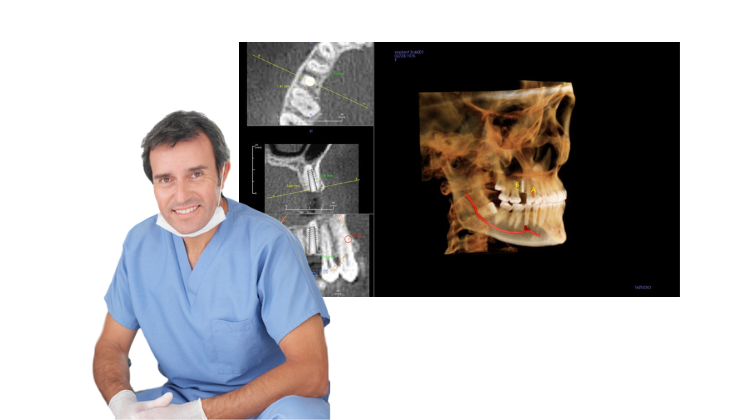Tracing Airway Procedures with Large FOV CBCT
%20(5)-1.png)
Here at Renew Digital, often speak to doctors who are interested in tracing airways to expand their service offering, but are unsure about the process and how to get started.
Before you make the investment in the right imaging equipment for airway studies, it's important to understand the workflow for tracing airway, then you can start evaluating the equipment that will help you achieve the results you're looking for.
Today, we're going to resolve these by simplifying the process of analyzing airways, to help you get started with airway studies in your practice.
Understanding the Importance of Airway Procedures in Dentistry
Before we begin, let's talk a little about the importance of airway procedures.
Dentists who analyze airways focus on the assessment and treatment of airway-related issues that can impact a patient's oral health. The airway refers to the passage through which we breathe, and any obstruction or abnormality in this pathway can lead to a range of dental problems. Dentists have recognized the significance of airway procedures in maintaining overall oral health and are now increasingly incorporating them into their practice.
By understanding the importance of airway procedures, dentists can better identify and address underlying issues that may affect a patient's dental health.
These procedures involve the evaluation of the airway's structure, function, and any potential obstructions. By tracing airway procedures, dentists can gain valuable insights into a patient's respiratory health, which in turn can have a direct impact on their oral health.
The Role of CBCT in Tracing Airway Procedures
Dental cone beam (otherwise referred to as CBCT) has become a proven technology in assisting dentists in tracing airway procedures. CBCT provides a three-dimensional view of the patient's craniofacial anatomy, allowing dentists to assess the airway and related structures with precision.
With CBCT, dentists can visualize the airway from different angles and obtain detailed information about its dimensions, obstructions, and abnormalities. This technology enables them to accurately diagnose conditions such as narrow airways, deviated septum, enlarged adenoids, and other issues that may impact a patient's breathing and oral health.
Keep in mind, CBCT is sold in a variety of field of view (FOV) sizes, meaning how large of an image you'll get. The maximum field of view needs to be large enough to see past the dentition and into the airway in order to get a complete picture.
This is often categorized as a large FOV, which can be collimated down the specific region of interest, when used for other procedures.
If you're interested in evaluating costs of a large FOV CBCT, check out our complete article: How Much Does a CBCT Cost?
The use of large FOV CBCT for airway tracing offers several advantages. Firstly, it provides a comprehensive view of the airway, enabling dentists to examine the entire pathway and detect any abnormalities or obstructions that may go unnoticed with traditional imaging techniques.
Large FOV CBCT enables dentists to evaluate the relationship between the airway and other craniofacial structures, such as the nasal passages, sinuses, and jaw. This holistic understanding of the airway's anatomy helps dentists develop effective treatment plans that address both the airway and any associated dental concerns.
Tracing Airway Procedures: Some Examples
Several studies have highlighted the positive impact of incorporating airway tracing in dental practice, showcasing improved patient outcomes and enhanced treatment planning.
In one example, a patient with chronic dental issues was found to have an obstructed airway due to a deviated septum. By utilizing large CBCT to trace the airway, the dentist would be able to accurately diagnose the underlying cause of the patient's dental problems.
Subsequently, the dentist is able to develop a comprehensive treatment plan, addressing both the dental issues and the airway obstruction.
In another example, a dentist sees a patient with sleep apnea symptoms and dental concerns. By utilizing large CBCT to trace the airway, the dentist is able to see a narrow airway as the root cause of the patient's sleep apnea and related dental issues.
With this knowledge, the dentist can construct a customized treatment plan, combining airway interventions with dental procedures.
Ready to Get Started?
Making the investment in advanced technology like a large FOV CBCT for airway analysis requires careful consideration and planning. You want to be sure you’re getting the best value and making the right decision for your practice.
For over 10 years, Renew Digital has helped our customers save money on their CBCT machines by purchasing certified pre-owned systems.
With our brand-neutral approach, we can recommend the right system for your practice based on your unique imaging needs. We offer today's leading and most trusted brands for airway, including DEXIS/KaVo, i-CAT, Instrumentarium, Planmeca, Sirona, Carestream, Vatech and more.
To start your CBCT machine purchase plan, or to have a conversation with an imaging expert, call our sales reps at 844-220-4963 or click the button below.


%20(56).png)
